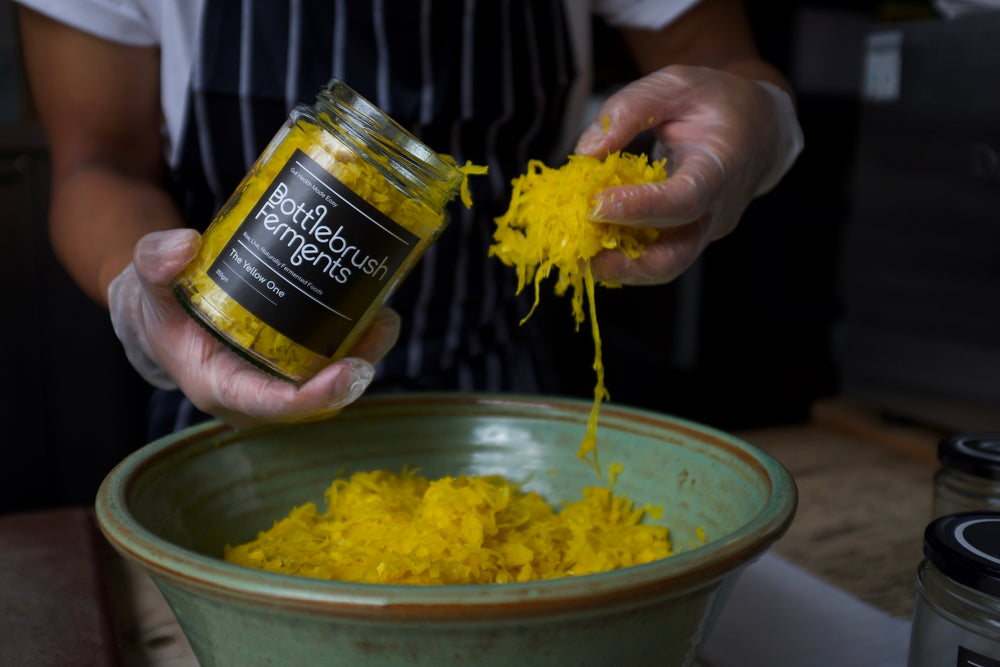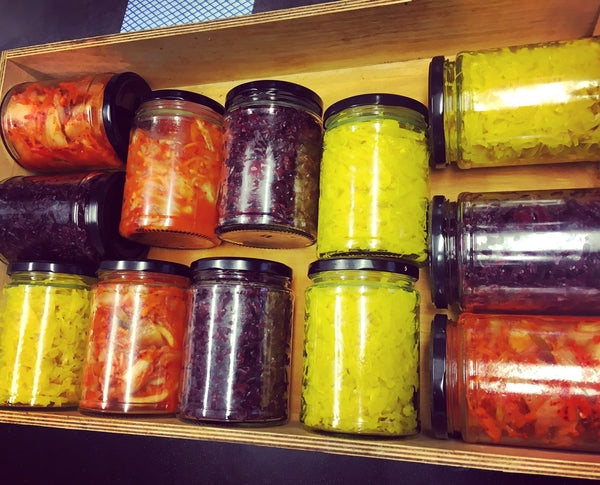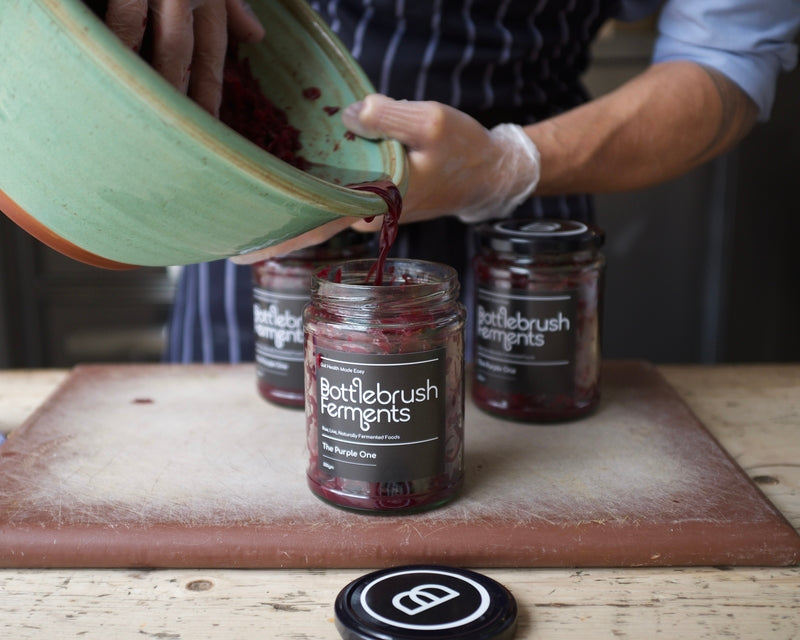What We Do

We try and help you eat great tasting food, made from natural ingredients with an emphasis on fermentation and everything that comes with it.
It’s perhaps the quickest, most convenient, not to mention, tastiest way of contributing to your recommended quota of five to ten servings of veg and fruit a day.
Every spoonful (1 heaped table spoon) delivers loads of flavour and contributes to your veg quota for the day.

Here at bottlebrush ferments, we’re all about colour. natural colour that is.
all that’s in our ferments are high quality vegetables, the occasional fruit, herbs, spices and salt.
What are Fermented Foods?
So, what exactly is fermentation?
As we mentioned earlier, it is a method of preserving foods, in our case vegetables mostly, so that they can be consumed long after they would normally have perished.
Different to beer or wine, which are both fermented using certain yeasts, Lacto-fermentation (the process we use) uses bacteria to do the job, Lactic Acid Bacteria to be exact.
The main strain of these bacteria are the Lactobacillus family and they live in the soil and on the surface of all plants, fruit and vegetables, especially those growing close to the ground. They are also present in the gastrointestinal (GI) tracts, mouths and even on the hands of humans.
Lactobacillus bacteria have the ability to convert the sugars in certain veggies into Lactic acid. In the right environment (anerobic or without oxygen) these bacteria act as a natural preservative that prevents the growth of harmful and dangerous bacteria. They also preserve or in some cases, actually increase the vitamin, mineral and enzyme levels of the food and potentially one of the most beneficial by-products of this process, is the formation of microscopic organisms which when consumed, may populate the gut and start to interact with it and its many functions.
How is it done?
We use the traditional method of Lacto-fermentation, which quite simply is the process of adding a good quality salt to shredded vegetables – cabbage as a foundation and then some other funky bits and pieces for unique individual flavours and health benefits, allowing the veggies to “sweat”, meaning that the salt naturally draws out the water in the cells of the veggies.
We then massage it by hand to release more water, then tightly pack it all into large drums allowing the water to cover the cabbage completely (creating an anaerobic environment) so no harmful bacteria can grow or get into it.
We then simply let time work its magic. Anywhere between 3 and 5 weeks we have found optimal to produce the right taste, texture and balance. All things we consider very carefully when creating our products.
Our Process
Why is this Important?

“It’s multi faceted. We are helping people reach their daily veggie quota in a quick, convenient and tasty way and we’re helping people to continue to enjoy the foods they love.
For a bit more of a sciencey answer, read on……
Hippocrates stated that “All disease begins in the gut.”
It’s estimated that up to 80% of our immune system is housed there, yet worryingly a large percentage of the population suffers from some kind of digestive issue – gas, indigestion, heartburn/ acid reflux, food sensitivities, bloating, constipation, diarrhea, etc which if left untreated, could possibly lead to more serious issues. Constantly emerging science suggests that there may be links between compromised gut function and many of our modern day diseases.
It is believed an unbalanced bacterial environment in the gut is the main culprit, with most people suffering from a build up of harmful bacteria. Antibiotics, exposure to chemicals in and on our food and the vast amounts of highly processed, synthetic foods in most people’s diets are all contributing factors.
We love these humble, ancient foods and have given them a modern spin, with different flavours and food combinations.
Go on, give it a try.
But be warned, our ferments are addictive and have been known to make you crave them and generally put a spring in your step.
We hope you enjoy them as much as we do – Ben & Hesh
